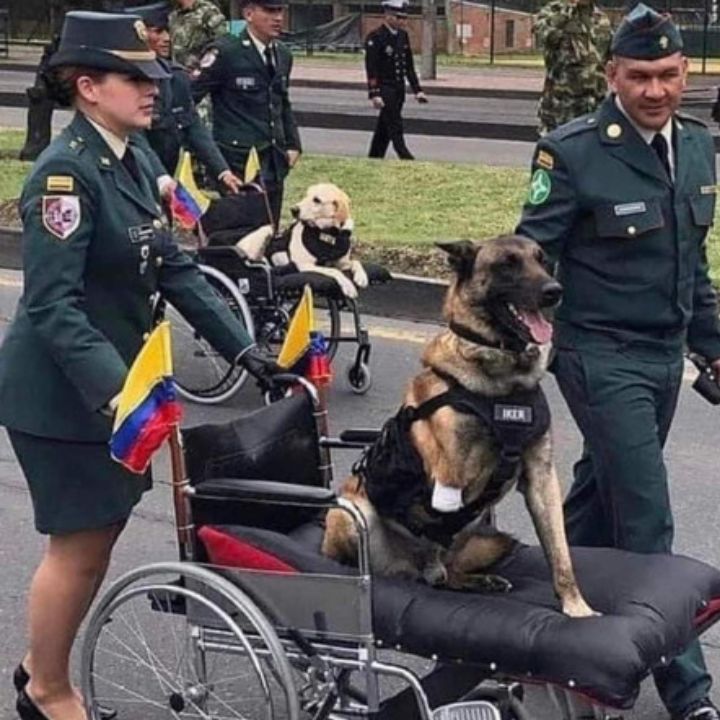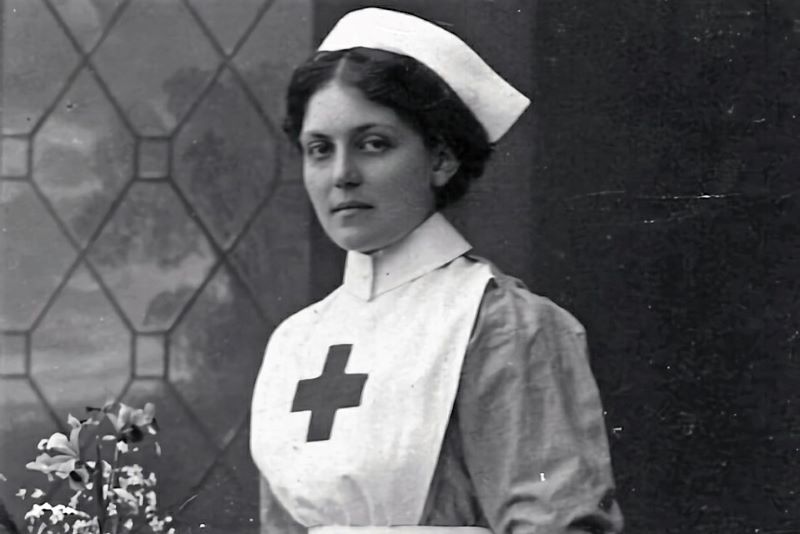In the heartwarming tapestry of stories that unfold in the aftermath of service, one tale stands out as a testament to loyalty, resilience, and the unbreakable bond between a soldier and their canine companion.

This is the emotional journey of a disabled war dog, a brave four-legged hero, returning to its hometown in a wheelchair after three years of dedicated service on the front lines. The narrative unfolds against a backdrop of emotions that range from reunion joy to the challenges of adapting to a new reality, echoing the indomitable spirit that defines the connection between humans and their faithful canine partners.
The journey begins with the war dog’s return to its hometown, a place filled with memories of training, camaraderie, and shared hardships. The anticipation builds as the community gathers to welcome back a hero, not only for its service on the battlefield but for the sacrifices made in the line of duty.
The emotional resonance is palpable as the disabled war dog, now in a wheelchair, is wheeled into the heart of the hometown that holds a special place in its canine heart.

The reunion is marked by a wave of emotions—a mix of joy, nostalgia, and an underlying awareness of the challenges that lie ahead. The disabled war dog, adorned with medals and symbols of honor, is surrounded by familiar faces and new friends eager to express their gratitude for its service.
The scene is a poignant reminder that, even in the midst of celebration, the scars of war extend beyond the visible and into the realm of the emotional.
As the disabled war dog settles into its hometown, the narrative takes a turn towards the realities of its newfound condition.
The wheelchair, once a symbol of adaptability and resilience, becomes a focal point for the community’s collective effort to provide support. Veterinarians, therapists, and community members collaborate to ensure that the war dog’s transition to civilian life is as seamless as possible. The wheelchair becomes a symbol not of limitation but of the determination to overcome obstacles and continue the journey of life with dignity.

The emotional journey is not without its challenges. The war dog, accustomed to the rigors of military life, undergoes a period of adjustment to the slower pace of civilian existence. The community plays a crucial role in providing emotional support, understanding the unique needs of a disabled war dog, and creating an environment



